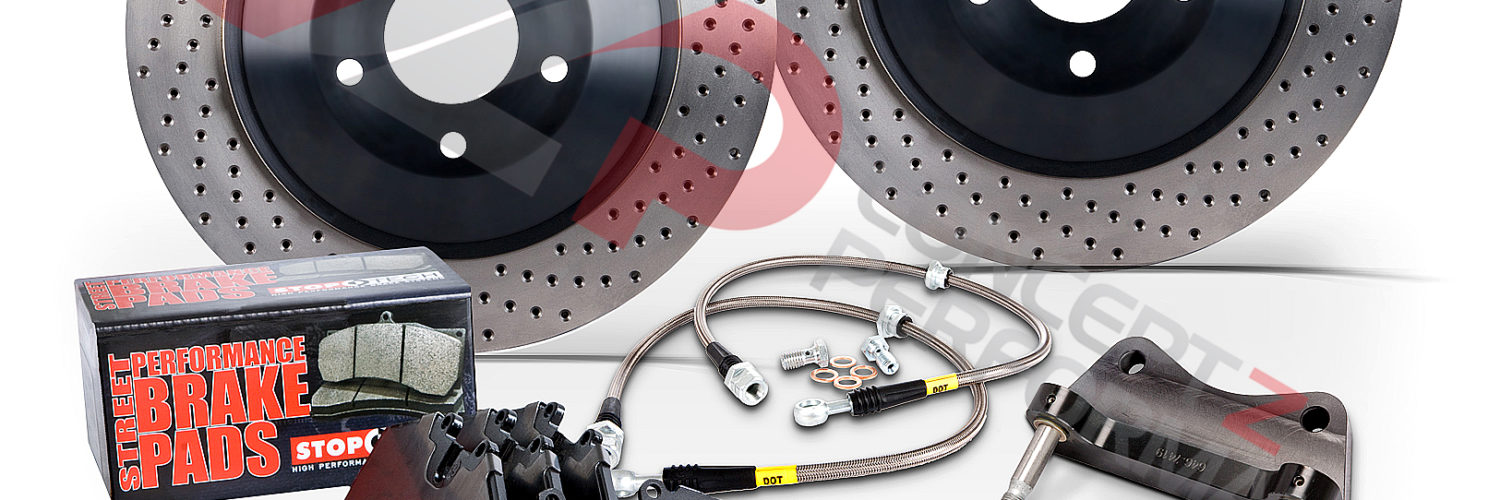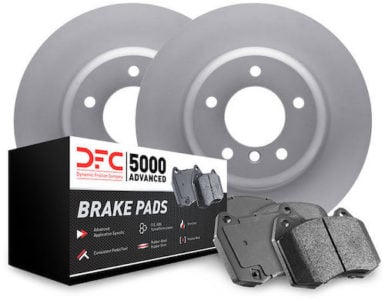As a general rule, for every $2 invested in power/performance you need to invest $1 in brake system upgrades. This is because the more power you produce the harder it’ll be to rein your beast in once it’s running at speed.
To do this, you have a choice. You can purchase all the individual parts including brake rotors, brake pads, and so on or you can invest in a big brake kit.
What Are Big Brake Kits (BBK)?
Big brake kits include all components necessary to upgrade a performance vehicle’s braking system. Everything is bigger, which means more sophisticated design, engineering, and primary braking components, i.e. rotors, calipers, pads, and so on, along with supporting-components, i.e., rotor rings, fluid and fluid lines, sensors, and fittings.
Big Brake Kits are usually for serious high-performance needs including full-stop racing, street performance, and any other vehicles that need to go and stop on a dime. Many premier brake manufacturers such as StopTech, EBC, Brembo, and others offer Big Brake Kits. (More about basic brake kits here.)
The Issue Of Balance In Big Brake Kits
To cut down on costs, many have tried to upgrade the brakes on only one axle. Unfortunately, it just doesn’t work that way. That creates a problem with balance, and you don’t want to find yourself falling off the road to save a few bucks.
Big brake kit manufacturers understand the need to be cost-effective, which is why you’ll see many of the kits come with minimal packaging while still delivering beefier components such as larger-diameter rotors and supporting components that customers could apply to both axles.
How Typical BBK Kits Are Applied In Various Performance Segments
As mentioned, big brake kits suit serious performance requirements. Here are the three primary segments that apply:
Street performance – From street racers to customized show car builds. Some of the typical brands include Honda, Volkswagen, Chevrolet, Dodge, Jeep, Audi, Mitsubishi, and Ford.
The components include 4-6 piston caliper designs, larger pads using more exotic materials and, of course, larger-diameter rotors. Kit fittings include heavy-duty lines, rotor rings, and a requirement for heavy DOT fluids.
These are standard suspension mounts and fittings. This allows for increased stopping power while not having to alter relating core suspension geometries.
Factory-based and/or spec-racing divisions – Big brake kits are available for popular spec-racing applications including street racing, track-only, and/or alternative events such as SCCA amateur and Pro Solo competitions. These systems offer similar kit values as street-performance packages, including a need for enhanced fluid and fitment requirements.
Purpose-built racing divisions – This is the top of the pyramid, and all components here are top-line and specialized for particular types of racing competitions. Some of these include IMSA, SCCA, and FIA classes in addition to NASCAR divisional series, NHRA divisional series, IHRA divisional series, WoO divisional series, SCORE divisional series, and others.
To ensure you’re on the right track (see what we did there), discuss your braking needs with an expert third-party brake provider like the team at BuyBrakes.com. Let us know if you have any technical required by the ACCUS, FIA and/or SCCA rulebooks.





